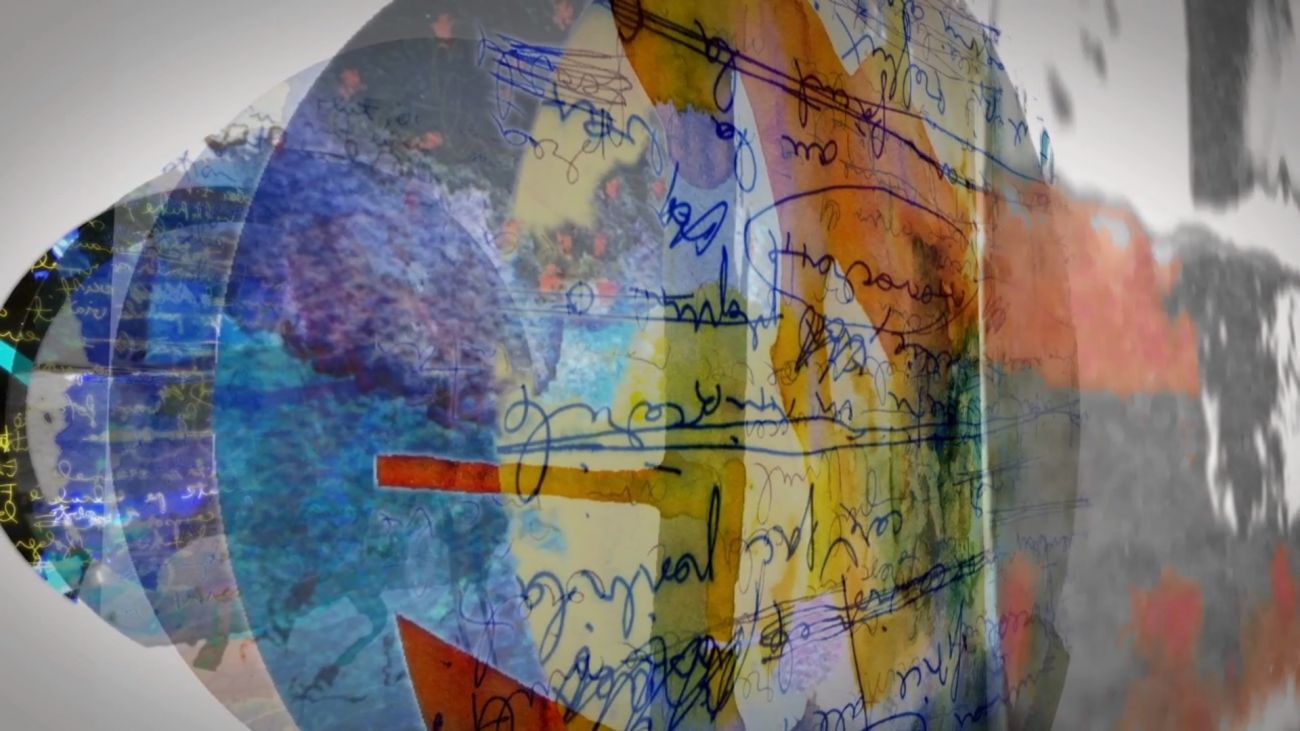"In the beginning was the Word"
Logos and metamorphosis in the creation of art
lecture and video presented at the 2nd International Ceramics Biennial, Art Museum Cluj-Napoca, 2015
international symposium "Ceramics Between Tradition & Contemporary Trends", opening of symposium on 8 October 2015
(videostill and excerpt from the lecture)

(...) The saying goes, In the beginning was the Word - it is a common quotation in the world and speech of Christian cultures. However, epistemological research reveals it in similar evident forms also in other religions like Judaism, Islam, Jainism, etc. But what is the Word? And what is the beginning? Which beginning are we talking about? of a universe or cosmology? of a real world or a fictional world? of a fact of life or a spiritual myth? And if we are talking about Creation, either as a fact of life or as an artistic fact: Where can we draw the line between reality and fiction? Does not actually any form of creation contain a perception of the world surrounding the creator and an awareness integrated in conscience? Is this perception and awareness the Word that is the subject? The logos that speaks through us and of which we speak in creation? (...)
In one of my individual exhibitions in Cologne this year, a poet met me after the opening reception and told me with calm sincerity: I envy you, the artists, because I believe that in the beginning was the image, not the word. But what is the Word?, I asked him, and I ask again in front of you today, isn’t the logos an act of creation, in other words, an expression of metamorphosis that generates a cosmology? and in this perspective, doesn’t logos mean any language of signs, based either on sound, or image, or letter, or all of them together? I believe that anyone who is familiar with post-modern interpretation systems - semiotics, semantics, analytic linguistics, etc. - can discover in all these specific theories the longing, I would even say the need, to describe the inner and outer universe in a cognition purified from a rough visual fact. (...)
At the same exhibition a young woman also came to me, a biological researcher, who told me with frenetic cheerfulness: You know, your circular images resemble the cells I see under the microscope! That is exactly what they are: they are cells of love, I said with similar cheerfulness. That is why they bear this ancient and sacred title, Shir ha-Shirim. All those who have have explored the deeper understanding of the Song of Songs know that it is not about a woman looking for her lover, although it might seem like that at first sight. Yet it is about the Creature who is sick with love, longing to dedicate herself and living her devotion, (..) is the idea of pure love, void of ego, an idea that is taken over and refined later(..) - as a way of redemption. This state of Being, has been witnessed during all human culture in its heritage and evolution as a superior level of existence, expressed not only by religion but also in philosophy, mysticism, literature, art, etc.
But isn’t the artist like an alchemist in his work of transsubstantiating materials, transferring material energies into sensory and spiritual forms? For those of you who have heard of symbols in alchemy, the image of coniunctio spirituum (Rosarium philosophorum 1550) is familiar - it shows a female and a male nude who embrace each other or hold each other’s hand, each of them wearing an imperial crown - the communion that leads to a superior way of existence, the symbolic union of the opposites. The same symbolism appears in the biblical image where Adam and Eve, who are naked, hold each other’s hand under the tree of knowledge and under the eyes of the Creator - after eating from the forbidden fruit, they were expelled from the paradise of innocence into a form of existence, based on an extended perception of oneself and of the Other - I am referring to the Other with a capital O.
In the sixties, when mankind discovered space travel, the search for life forms on other planets raised the question of the language that would enable the communication with these alien forms of existence. How should we present ourselves so the Other might understand who we are, where we are coming from, where we are going? What language should we speak, what words should we use to make ourselves understood?
Scientific studies on this topic produced an icon: an unperishable material with a simple engraved drawing, representing a female and a male nude holding hands, placed in a suggestive astronomic context of planet Earth within the solar system, with an indication of the cosmic time when the icon was made. Doesn’t this kind of representation, apart from any mythological interpretation but reduced to the content, bear a striking resemblance with the biblical image of Adam and Eve, with the alchemist symbol of the coniunctio spirituum, with the Egyptian theme of Pharaoh Amenhotep the Fourth and his wife Nefertiti, who introduced the monotheistic cult of the Sun? and we can find a multitude of examples to atteste this similarity (...)
So I have to ask you more about our perception: Isn’t the Earth circling around the Sun like the lover looking for her chosen one, sick with love? Isn’t the Sun with its light and warmth the one that produces life, metamorphosis on Earth? And isn’t this circular move our way to exist? (...)
Continuing this thought I would like to share with you the words from Shir ha-Shirim that I often say in my mind and that guide my whole life: stir not up nor awaken love until it please.
